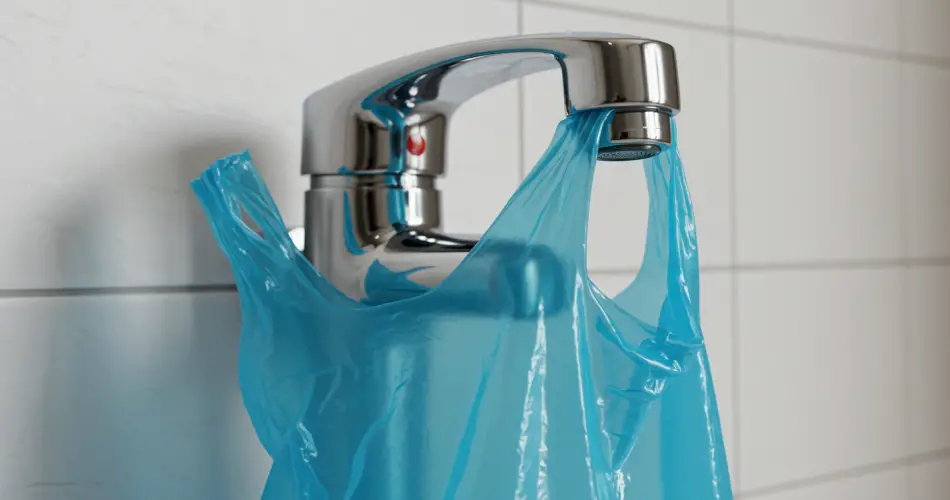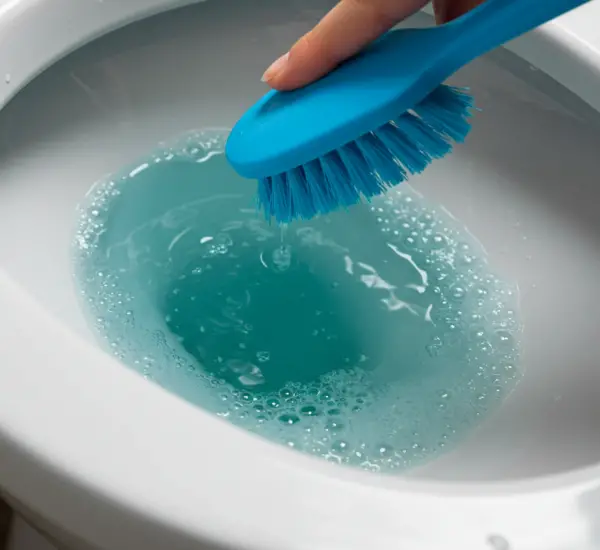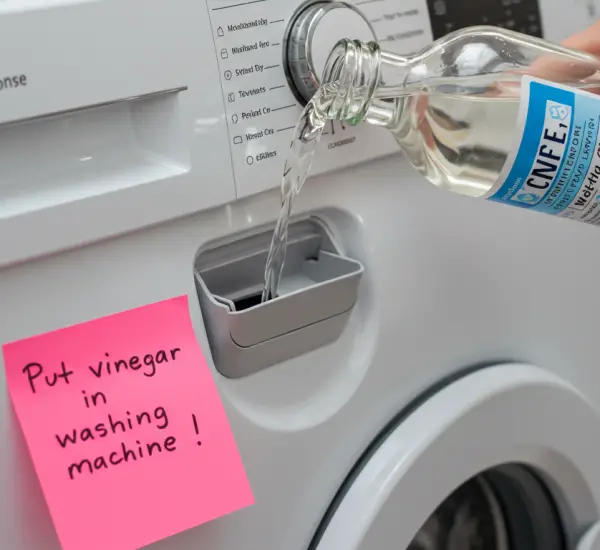Cleaning the bathroom is one of the most time-consuming and frustrating chores in any household. Even when you scrub, disinfect, and polish every corner daily, the results don’t always match the effort. Stubborn marks often remain, especially around faucets and fixtures. One of the most common culprits is limescale—those white, chalky deposits left behind by hard water.
While many people rely on liters of bleach or heavy-duty commercial cleaners to achieve a sparkling bathroom, there is a much simpler and eco-friendly solution that requires no harsh chemicals. In fact, the secret lies inside your kitchen cupboard, and with the help of a simple plastic bag, you can restore your faucets to a brilliant, like-new shine.
The Problem With Limescale
Limescale is formed when calcium and magnesium in hard water accumulate on surfaces. Over time, these mineral deposits build up, leaving behind cloudy, whitish stains on faucets, showerheads, tiles, and sinks.
Even if you clean regularly, limescale can make your bathroom look dirty and neglected. Faucets that were once shiny and new become dull, spotted, and rough to the touch. Beyond aesthetics, limescale can also clog fixtures, reduce water flow, and create an environment where bacteria thrive.
The Plastic Bag and Vinegar Method
One of the simplest and most effective ways to remove limescale from bathroom faucets involves nothing more than a plastic bag, white vinegar, and a little patience. Here’s how it works:
-
Choose a sturdy bag. Select a strong plastic bag that can hold liquid without leaking.
-
Add vinegar. Pour about two cups of white vinegar into the bag.
-
Attach to the faucet. Carefully place the bag over the faucet so the spout is fully submerged in the vinegar. Use a rubber band or string to secure the bag tightly in place.
-
Let it soak. Leave the bag attached for several hours, or ideally overnight, to allow the vinegar’s natural descaling properties to dissolve the limescale.
-
Rinse and polish. Remove the bag, rinse the faucet with warm water, and wipe it with a soft microfiber cloth. The faucet should look significantly brighter and cleaner.
The acidity of vinegar breaks down the minerals, loosening even the toughest deposits. It’s a natural, non-toxic solution that avoids the need for expensive or chemical-heavy cleaners.
Boosting Results With Baking Soda
If you want an even deeper clean, you can combine vinegar with baking soda. This classic household duo is known for its powerful cleaning properties:
-
Mix five tablespoons of baking soda with a small amount of water to create a paste.
-
Apply the paste directly onto the faucet using a sponge.
-
Let it sit for about 10 minutes, then scrub gently to loosen any remaining limescale.
-
Rinse with water and wipe with a damp cloth.
The mild abrasiveness of baking soda helps remove stubborn residue without scratching metal surfaces, while vinegar dissolves the deposits from underneath.
Tackling Stubborn Spots
In some cases, you may notice small, persistent patches of limescale even after cleaning. For these areas, an old toothbrush is the perfect tool. Use it to scrub around edges, crevices, and hard-to-reach spots where a cloth can’t reach.
Since the bristles of a used toothbrush are already softened, they are less likely to scratch delicate finishes while still being firm enough to dislodge mineral buildup.
An Alternative: Citric Acid
If you don’t have vinegar at home, citric acid works just as well. This natural substance, derived from citrus fruits, is another highly effective descaling agent.
To use citric acid for faucet cleaning:
-
Dissolve five tablespoons of citric acid in two cups of warm water.
-
Optionally, add a teaspoon of baking soda for extra cleaning power.
-
Pour the solution into a plastic bag and attach it to the faucet as you would with vinegar.
-
Leave it in place for a few hours or overnight.
-
Rinse and wipe with a damp cloth.
Citric acid not only removes limescale but also has antibacterial properties, making it an excellent alternative for keeping the bathroom fresh and hygienic.
Extending the Method Beyond Faucets
This cleaning hack isn’t limited to faucets. The same vinegar or citric acid treatment can be applied to:
-
Showerheads: Submerge them in a bag filled with vinegar overnight to restore water flow and remove mineral blockages.
-
Bathtubs and sinks: Apply the solution directly with a sponge to remove limescale and soap scum.
-
Tiles and grout: Spray diluted vinegar or citric acid onto tiled surfaces to eliminate dullness caused by water residue.
-
Toilet bowls and bidets: Pour vinegar or citric acid solution inside, let it sit, and scrub to remove stains and buildup.
With just a few natural ingredients, you can tackle nearly every limescale issue in the bathroom.
Why Natural Cleaning Works Best
Commercial limescale removers can be effective, but they often contain harsh chemicals that can damage fixtures, release strong fumes, or harm the environment. Vinegar, citric acid, and baking soda, on the other hand, are safe, inexpensive, and eco-friendly.
Not only do these products protect your health and the environment, but they also help extend the life of your bathroom fixtures. Unlike corrosive cleaners, natural solutions are gentle on chrome, stainless steel, and other finishes, preventing long-term wear and tear.
Final Thoughts
A sparkling bathroom doesn’t require harsh chemicals, expensive products, or endless scrubbing. With a plastic bag, vinegar or citric acid, and a bit of time, you can eliminate limescale deposits and restore your faucets to their original shine. For extra cleaning power, add baking soda and use a toothbrush to target stubborn spots.
Whether you’re tackling faucets, showerheads, tiles, or sinks, these natural remedies are easy, affordable, and highly effective. The next time you notice chalky white stains on your bathroom fixtures, skip the bleach and try this simple method—you’ll be amazed at how quickly your bathroom looks refreshed and polished again.



